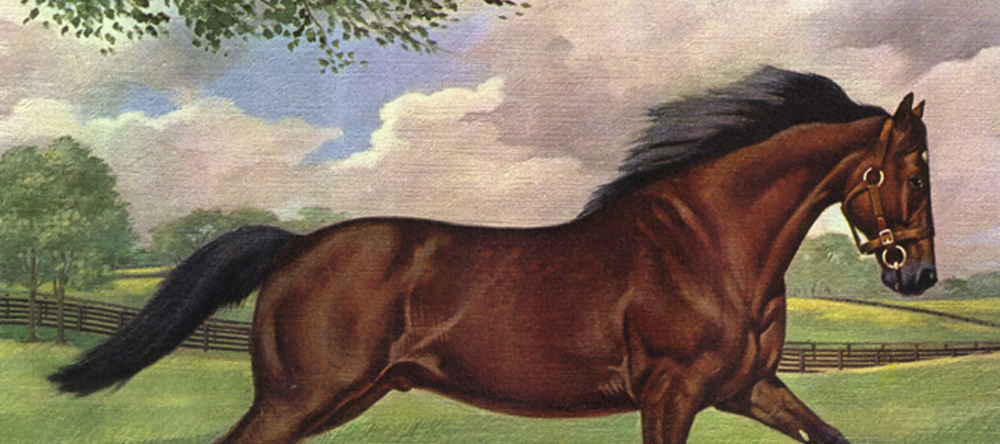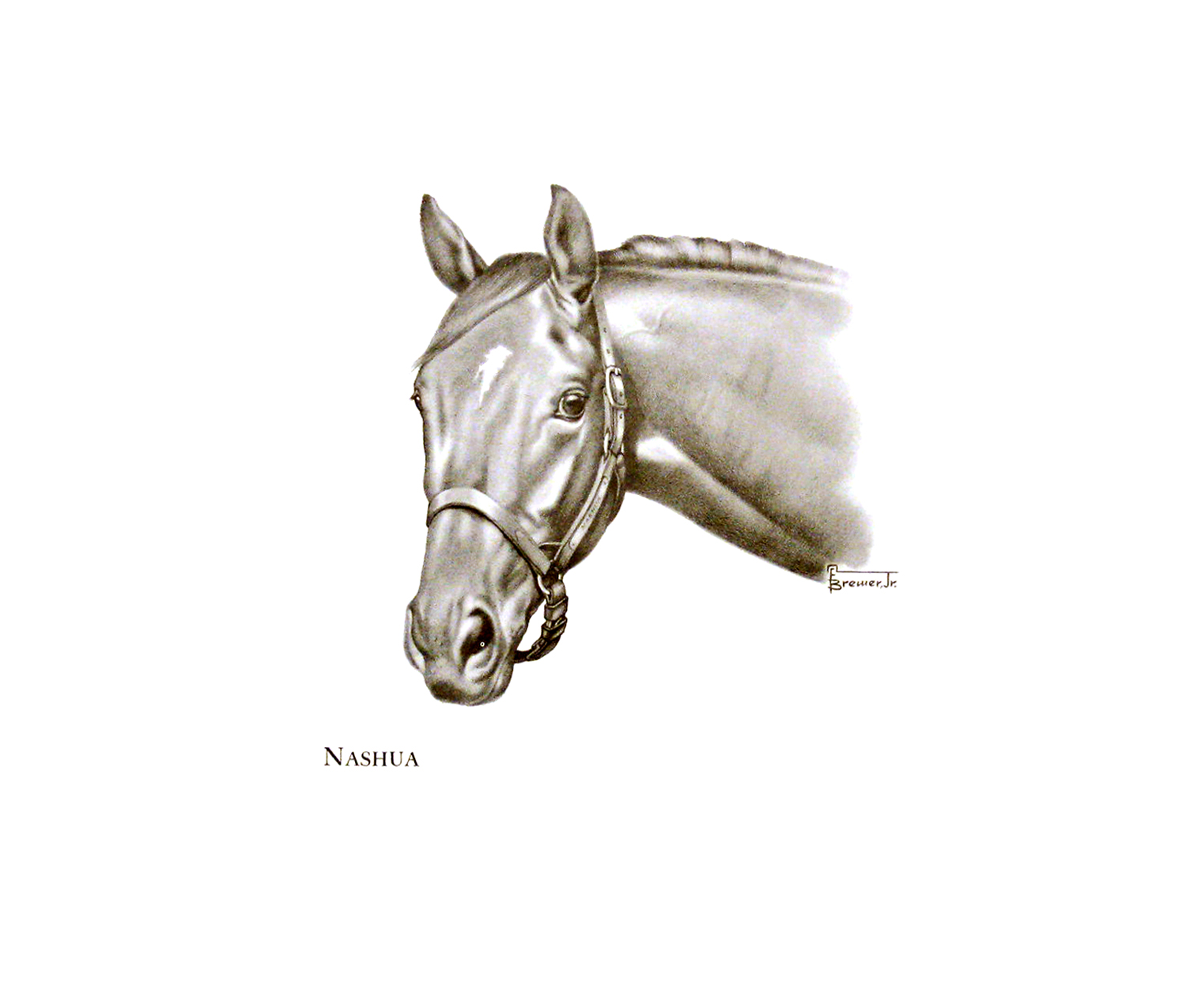his print has been in storage since 1967 and has slight discolorations around the print border which does not distract from the beauty of the print and would be easily covered up when matted and framed.
By *Nasrullah – Segula, by Johnstown
Once the world’s richest and most expensive horse, Nashua ranks as one of the half dozen best American performers of this century. He was the leading two- and three-year-old of his respective seasons, and a leading handicap horse at four.
Bred by the late William Woodward, Sr.’s Belair Stud, the half brother, by *Nasrullah, to the fine filly Sabette was foaled at A. B. Hancock’s Claiborne Farm, Paris, Ky., where the Belair breeding stock was boarded. Mr. Woodward annually sent home some of his best prospects to race in England; Nashua was selected to make such a journey. Before the colt was shipped, though, his owner died; and his son, William Woodward, Jr., elected to confine the Belair activities to the United States.
Nashua lost only twice in eight starts at two, being beaten a neck by Royal Note in the Cherry Hill Stakes and forcing Summer Tan to a new 6 ½ furlong record in the Cowdin Stakes. The Belair colt’s juvenile victories included the Juvenile, Grand Union Hotel and Hopeful Stakes, and Belmont Futurity. In the Futurity Trial, he equaled the straight Widener Course record of 1:08 1/5 for six furlongs.
He also lost but twice at three, running second to Swaps in the Kentucky Derby, and third to the older handicap stars High Gun and Jet Action in the Sysonby Stakes. Nashua’s 10 wins tha season included the Flamingo, Preakness, Belmont and Dwyer Stakes, Floria Derby, Wood Memorial, Arlington Classic, Jockey Club Gold Cup and a match race in which he avenged his Kentucky Derby loss to Swaps. In the Preakness, the son of *Nasrullah set a new 1 3/16 mile record of 1:54 3/5.
Near the end pf the year, Mr. Woodward, Jr., was killed; and the Belair bloodstock was offered for sealed bids. Leslie Combs II, acting for a syndicate, bought Nashua for $1,251,200, then the highest price ever paid for a Thoroughbred.
He raced for Mr. Combs at four, although the colt was still trained by the octogenarian “Sunny Jim” Fitzsimmons. Nashua won six of 10 starts that season, and was second to Mister Gus in the Woodward Stakes. The Combs colt’s triumphs in his final campaign included the Widener, Gray Lag, Camden, Suburban and Monmouth Handicaps, and his second successive victory in the Jockey Club Gold Cup. Setting a new American two-mile record of 3:20 2/5 in the latter feature, he raised his total earnings to the then record figure of $1,288,565 from 22 victories, four seconds and a third in 30 starts.
Nashua entered stud at Mr. Combs’ Spendthrift Farm, Lexington, Ky., in 1957 at a private stud fee. The remarkable horse’s first foals arrived in 1958, and will reach the races as two-year-olds of 1960.

